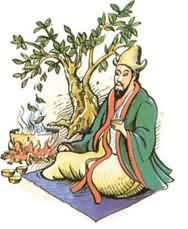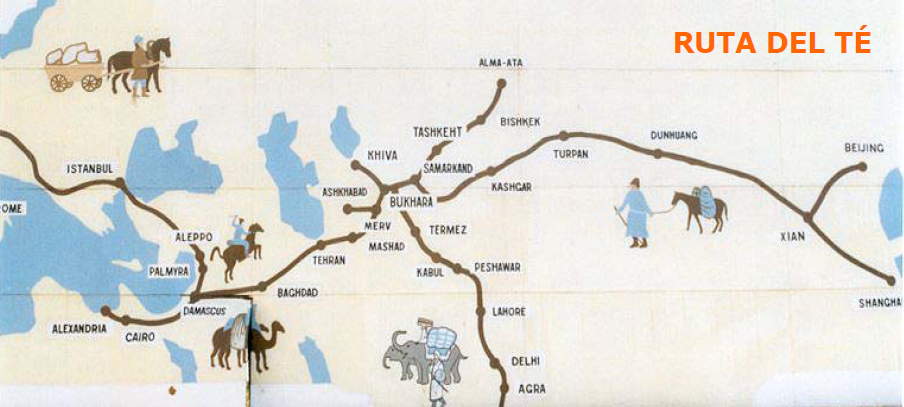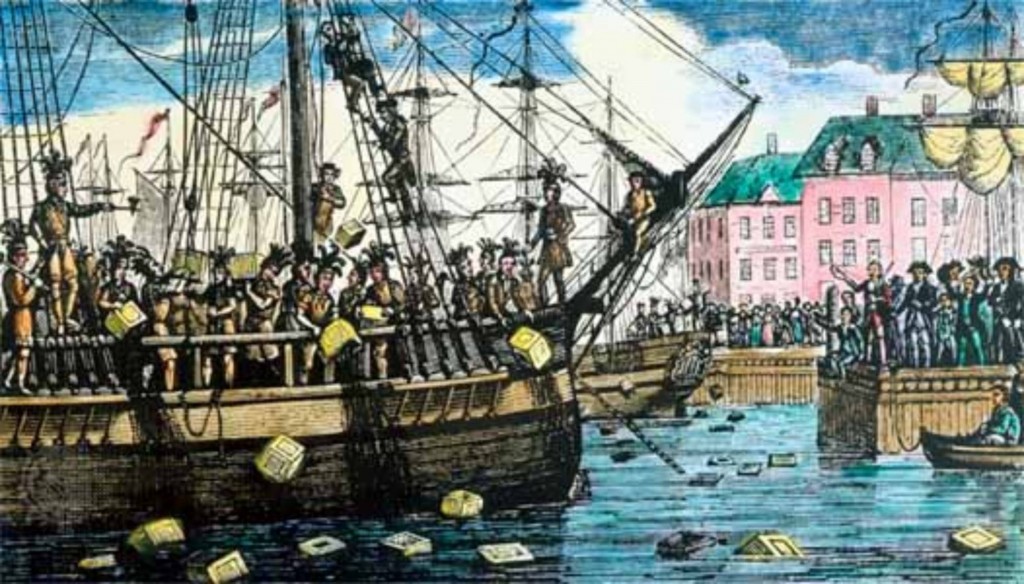In most Asian countries there are traditional myths and legends that explain how tea was discovered. For which there are several versions about the origins of its discovery. The best known is the Chinese legend dating almost 5000 years old. Legend has it that tea was discovered around 2750 BC by the Chinese emperor and scholar Sheng Nung. The emperor was resting under a wild tree when a gentle breeze blew leaves into his bowl of boiling water. For health reasons, he had instituted under his mandate that all water for consumption had to be previously boiled. When he woke up, he drank the concoction, which made him feel revitalized, relaxed and in turn his mind was at peace. Shen Nung is known as the father of Chinese agriculture and medicine, who is said to have encouraged the Chinese people to cultivate the Camellia Sinensis tree and consume it as a daily drink.

There are known ancient references emphasizing the medicinal properties of tea. For example, headache relief, stomach pain, halitosis, blood impurities removal, depression, etc. A Chinese surgeon in 200 BC recommended it to increase mental focus. Buddhists have also used it for hundreds of years for relaxation, mental focus, and for sleep deprivation during long hours of meditation.
In China the spread of this drink occurred in the T’ang dynasty (618-907) when the Buddhist monk Lu Yu, known as the patron of tea, compiled his ancestor experiences and knowledge in the first infusion compendium, called Cha Ching (The Tea Classic). Lu Yu was convinced that tea symbolizes harmony and a mysterious union of the universe.”
In 9th century Japan, Japanese monks brought a new method of meditation, Zen Buddhism, from China along with the tea plant. In addition to its medicinal properties, they found it to be a stimulant to stay awake for long hours of meditation. This quickly became popular and began to be cultivated, preceding tea ceremony, or Chanoyu, where it became a concoction linked to art, perfection and purity.
In ancient China, the tea trade gave rise to the silk, porcelain, and horse routes, where tea was traded with neighboring countries. Around 400 AD, China exported tea to Japan and Tibet. Tea transportation routes took months. The tea brick became a currency in trade for products of interest to the Chinese: such as horses for the army, iron, salt, fur, etc.


It then spread to Russia, through Mongolia and Siberia. The was tea transported in the form of compacted bricks, allowing the camels to carry more. During the nights the animals rested near the fires and the tea bricks were impregnated with smoke, which made the Russians smell a smoked tea. This event is said to have given rise to Lapsang Souchong (smoked black tea) and the Russian Caravan blend (a blend of Keemun (Chinese black tea) and Lapsang Souchong).
The first to bring tea to Europe; It was the Dutch. They established the Dutch East India Company in 1602, the first multinational corporation in the world. The Dutch government granted a monopoly for 21 years to carry out colonial activities in Asia. In 1606 they imported the first tea shipment to the West.
In the West, England was the country that was most fond of tea. In 1662 King Carlos II married the Portuguese princess Catalina de Braganza, a great tea consumer, who took it to England and became fashionable in British courts. In the 17th century, tea was very expensive and was only consumed by the highest classes of society, which is why it was associated as a symbol of refinement and social status. In the first years it was imported to London by Dutch ships, then the British East India Company, created by Queen Victoria, imported larger quantities. This company grew to enormous power in the British trade with China, which lasted 200 years.

In 1748 England drastically reduced taxes on tea, increasing its popularity and consumption. The trade of the English with the Chinese was an unfavorable one. Imports of silk, porcelain, and tea exceeded exports of wool and spices. In 1773 the British began the export of opium, which was obtained from the pod of the poppy, which was planted in their most important and lucrative colony; India. This created an addiction in the Chinese, which quickly helped offset the trade deficit. In 1839 the first Opium War began. By the end of the war, the Chinese were in a very unfavorable situation, which led to the collapse of the old Chinese empire in 1942.
Regarding India, in 1823 the English set out to cultivate tea. Major Robert Bruce in charge of the Assam garrison tasted an infusion of leaves from a local bush consumed by the natives, then found a resemblance in taste to Chinese tea. Bruce sent the leaves to Calcutta for study, discovering that they were a local variety of Camellia Sinensis: Camellia Sinensis Assamica. The tea industry started in India from this event at the hands of the English.
The British East India Company brought Chinese producers to India to learn the techniques of growing and making tea. The first shipment of black tea from Assam made by the English arrived in London in 1838. Auctioned in January of the following year. The English showed that they could produce their own tea, thus expanding cultivation in other regions of India.
At the beginning of the 19th century in England, tea became an established custom, thanks to the Duchess of Bedford, who made it fashionable to serve a cup of tea with a light snack before dinner. The invention was so good that the Duchess began to gather her friends to have afternoon tea, where she also served the drink accompanied by cakes and sandwiches, thus popularizing the “Afternoon Tea”.


Regarding the United States, tea is associated with the beginning of independece struggle. In 1773 a group of American settlers dressed as Mohawk aborigines protested against tea taxes imposed by Great Britain. They boarded the British East India Company transport ship, dumping the entire cargo of tea overboard in Boston Harbor. This incident called the Boston Tea Party marked the beginning of the US War of Independence. Reason why tea is currently tax free in that nation.
In 1904 a relevant event in the history of tea occurs during the Saint Louis World Fair. Merchant Richard Blechynden introduces iced tea. He offered his tea to visitors to the fair who refused it due to heat. He added ice to hot tea and turned it into iced tea thus refreshing visitors. Although iced tea had previously been consumed in the United States, it was popularized by this one.
Regarding the history, origin or etymology of the word “tea”, in Mandarin Chinese it is pronounced chá, but in the Chinese language min, spoken in central Chinese coast and Southeast Asia, it was pronounced te. We know it by tea, given the origin of the trade route to Europe. Tea came to Europe through the Amoy Port (present-day Xiamen), and in local language tea was known as “tey”. Amoy was the main port used by Europeans in 1541 and the most used for tea export during the 19th century. In Europe it was the word tea, and its derivatives such as thé, tea, tee, etc. which began to be used. In other countries such as India, Russia and Turkey, they introduced tea as “cha” given the merchants’ origin, since they traveled by another route, the Silk Road, from regions where Mandarin was spoken.

